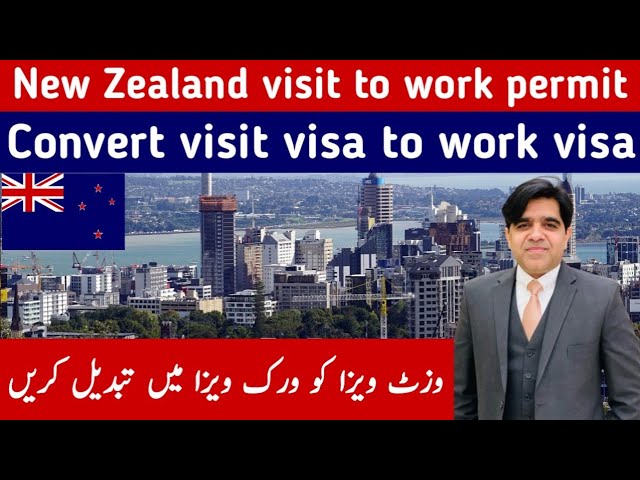As part of its efforts to amend the laws governing immigration, the government of New Zealand has tightened its regulations for some types of visas, stating that the existing levels are “unsustainable.” The modifications include things like requiring knowledge of English for entry-level positions and establishing a minimum level of education and experience required for the majority of employer-sponsored work permits.
- Low-skilled workers face a reduction in visa duration from five years to three
- The country might not go ahead with a plan to add 11 low-skilled roles to the Green List
- Employers to ensure migrant workers meet qualifications and skills before hiring
New Zealand is tightening its visa rules for migrants.
This is happening while the coalition government works to change the immigration laws, claiming that current levels of migration are “unsustainable.”
According to Immigration Minister Erica Stanford, the changes will mean that the country is “better testing the local labor market and reducing the risks of putting New Zealanders out of work.”
Let’s take a closer look.

Employers Worried About New Visa Rules
On Monday, New Zealand’s Employers and Manufacturers Association raised worries about the potential unintended effects of the new visa rules.
“We are supportive of ensuring we are bringing in the right workers, and that they are not exploited, but we do need to make sure we get the balance right. Making it harder for motivated workers to come into New Zealand means they will go somewhere else, that hurts business and means our economy misses out,” said Alan McDonald, the association’s Head of Advocacy.
In neighbouring Australia, there’s also been an increase in immigrants.
However, the government announced in December that it would cut its migration intake by half by making visa rules stricter for international students and low-skilled workers.
Tightening visa rules
Immigration minister Erica Stanford announced changes to the accredited employer-worker visa (AEWV), the main temporary work visa, which was introduced in mid-2022 to help fill workforce shortages after the COVID-19 pandemic.
The changes include measures such as introducing English language requirements for low-skilled jobs and setting a minimum skills and work experience threshold for most employer work visas. The maximum continuous stay for most low-skilled roles will also be reduced to three years from five years, according to Reuters.
More stringent rules on visas
The primary temporary work visa, the certified employer-worker visa (AEWV), was modified by immigration minister Erica Stanford. The AEWV was created in the middle of 2022 to help address a labor shortage following the COVID-19 epidemic.
The modifications include things like requiring English proficiency for entry-level positions and establishing a minimum level of education and work experience for the majority of employer-sponsored work permits. According to Reuters, the maximum continuous stay for the majority of low-skilled positions would also be lowered from five years to three years.
She stated the modifications would take effect right away.
“Where there is a skill deficit, the government is concentrating on luring and keeping highly trained migrants, including secondary teachers. In addition, we must make sure that New Zealanders are given preference for positions in areas where there is a skills shortage.
Employers must verify that a candidate meets these requirements before making an employment offer to a migrant, and they must also reveal that no other “suitable and available New Zealander” has applied for the post.
The Ministry of Business, Innovation, and Employment in New Zealand requires that in addition to posting the job advertisement for a minimum of 21 days, businesses must also explain “why any New Zealanders who applied were not hired.” CNN reports that it also mentioned that some positions in the transportation and care industries won’t need to fulfill these standards.
Reducing Risk for Arrival
According to Stanford, the changes would make migrants less at risk of exploitation.
In February, the Public Service Commission released its evaluation of the AEWV initiative. The initiative was started by former Immigration Minister Andrew Little in response to claims of exploitation.
The committee found that a few “scrupulous employers” took advantage of the program and collected money from those who wanted to move to New Zealand, according to The Guardian.
The government abandoned plans to add 11 more positions, including fitters, turners, and welders, to the Green List, a list of highly skilled occupations that more Zealand is having trouble filling.
“Migrants will be better able to understand their rights or raise concerns about an employer early by having an English-language requirement,” she continued.
“These modifications mark the beginning of a more extensive work program aimed at developing a more intelligent immigration system that better manages risks, controls net migration, adapts to our shifting economic environment, draws in top talent, and renews international education.”
Also Read: How often does total solar eclipse 2024 happen — and why today’s event is so rare
Growth in the immigration population
There are currently 5.1 million people living in New Zealand.
Since the pandemic ended, the number of migrants entering the nation has rapidly increased. 173,000 non-Zealand nationals entered the nation last year, sparking worries that this may accelerate inflation.
The Reserve Bank commissioned a study last month that examined possible links between migration numbers and inflation, but the findings were conflicting.
The working-age population grew more slowly in the year that concluded in March, indicating that the number of foreign workers may have peaked.
An international issue
Australia, a neighbor that has also experienced a significant surge in migration, announced that it would cut its immigration intake in half during the following two years.
Switzerland is also preparing for an important vote on immigration restrictions to keep the country’s population from growing beyond 10 million before 2050. By the end of 2022, the country’s population stood at 8.82 million, with immigrants making up a sizeable quarter of the total.
On Wednesday, 10 April, the European Union will take a crucial vote on a complete reform of its immigration rules. This decision will mark a dramatic change towards more stringent entrance processes for asylum-seekers and a shared responsibility among member states.
The European Parliament will discuss several regulations that are essential to the bloc’s agreement on immigration and asylum. This agreement is the result of a proposal that the European Commission presented in September 2020.















Reader Interactions